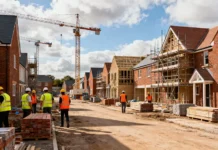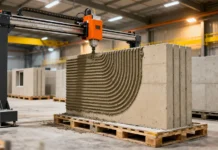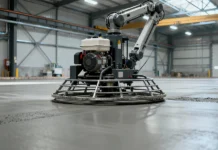One of the constant realities in the world of construction that is unanimously accepted happens to be that the cost of construction is not constant. One goes on to spend a lot of time looking at the construction costs, and every time they go on to end up with the same conclusion, construction never ever gets cheaper. Most often, over the years, construction costs have surged at or even above the level of overall inflation.
As compared to the 1950’s, constructing a square foot of a building happens to cost more now than it did then. The conclusion on construction costs happens to always be the same because one looks at it in general. Construction, however, consists of thousands of varied tasks that all go on to eventually combine into one thing: a building, an industry, or even a road. It includes pouring concrete, digging the foundations, nailing, and even cementing.
Let us take an introspective view and see how the construction costs happen to be changing based on task-by-task level.
1. The Aluminum Metal Price
When it comes to construction costs, the price of aluminum metal has dipped considerably over the years. As per the RSMeans, from 1954–1985, the aluminum metal price fell by almost 50% in retail. This went on to affect the pricing of many aluminum products as well as their installation. This has in it gutters, windows, and, to some extent, even handrails.
The price of aluminum has consistently decreased from 1985 to 2023, but the fact is that it has not resulted in these construction tasks getting cheaper across this period. However, it did affect some of the costs; aluminum gutters along with railing installation prices have decreased considerably. Though some, such as aluminum siding, windows, and downspouts, have not.
2. Pneumatic Nail Guns
When we talk of the cost of nailing in construction, it has considerably decreased over the years, with the introduction of pneumatic nail guns playing a massive role. Pneumatic nail guns may very well have been available in the 1950s, becoming more common in the 1980s. Since then, such guns have considerably decreased the cost of anything that could very well be nailed, like exterior walls, joist framing, plywood, and joist hangers. Unfortunately, this does not play out in the same way for most of the products in the construction industry. Chair rails as well as crown molding, which is also installed by nailing, have not been cheaper over the period. This can indeed be attributed to a rise in labor costs for nailing, which has surged significantly over time.
3. Piling Construction Expenditures
Piling happens to be defined as foundations that are driven or even bored through the ground along a certain length of the area. It seeks to carry and transfer loads to the soil, which is considered to be weak in the structure because of the soil conditions. The construction cost of piling has gone on to be considerably cheaper between 1954 and 2023. This can be due to the fact that heavy-lifting construction went on to enhance during that period. It can also be attributed to the fact that there happened to be innovative types of piling. This made sure that there happened to be a variety of options for how one could go ahead and save on cost by way of making use of a cheaper piling type that would fit their construction needs.
4. House Appliances
Construction when it comes to house appliances like electrical appliances as well as water appliances, among others, has indeed become cheaper. As per the data obtained from the FRED Economic Data, it is henceforth safe to conclude that the pricing of house appliances has become cheaper over the years. This can be noted due to the fact that consumer data from 1960 to 2023 has gone on to increase immensely. Construction costs when it comes to house appliances can be attributed to getting cheaper over the years due to improvements in their make. RSMeans data demonstrates that the expense of electrical appliances like water heaters got cheaper from 1954 to 1985 and, as a matter of fact, cheaper from 1985 to 2023.
5. Construction Labour Costs
In the years that have gone by, construction labor costs have increased quite significantly. Data coming from the Construction Labour Market Analyzer- CLMA goes on to show that labor cost percentages within the construction industry lie between 20% and 40% of the overall project budget. Construction costs, when it comes to labor, do not just entail the payment of wages. Other costs that happen to fall under the labor umbrella are payroll taxes, paid time off, compensation for workers, and, of course, other forms of insurance. It also has recruiting and training costs as well as payroll frauds, among others. Throughout the years, the cost of labor has indeed surged as compared to previous years, in spite of the productivity remaining relatively consistent, as per the insight provided by RSMeans.





























